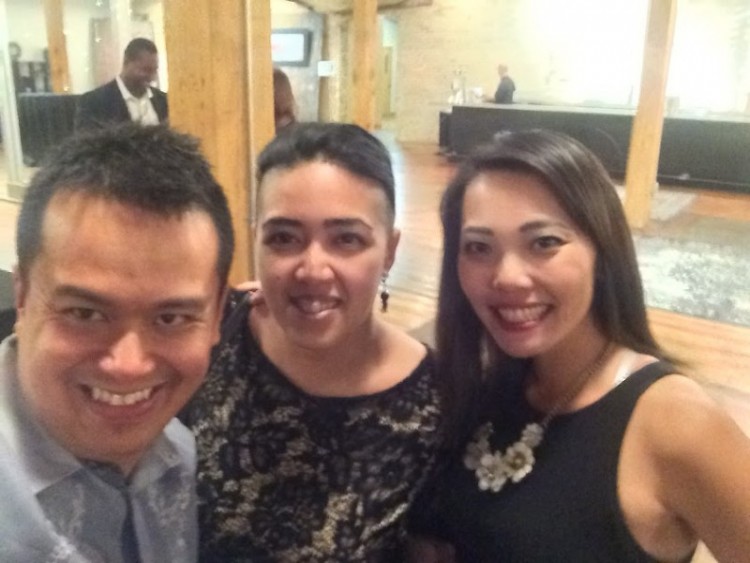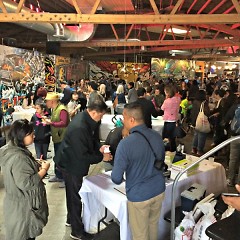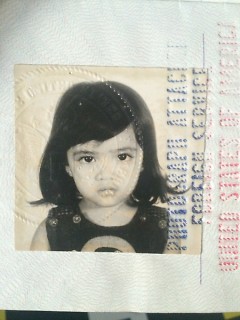I live for art, culture, and education. To me all three are inextricably tied. My educational and artistic goals have always been fueled by my love of variety, and personal experiences as an immigrant, person of color and Asian American woman.
For a long time, I had struggled with my identity as a young immigrant, trying to fit into the American fabric. I started elementary school in the U.S., and have spoken English since I was at least 4. I’m a legal citizen that considers myself absolutely American, yet my legitimacy is always considered questionable. Whether someone assumes I’m “not really” from here, or that my English speaking skills are good for a foreigner, or that I’m a submissive Asian woman that can be romanced with any Asian language; all are due to misperceptions about Asian cultures, particularly East Asian.
South Asian, Southeast and the Pacific Islands tend to be forgotten, probably because we can have brown skin and don’t always fit the stereotypical profile. But nonetheless, we’re usually lumped into one giant spring roll of expectations, whether we fit them or not. It’s as if Asian Americans can’t be individualistic the way America advertised we could be. So how do we challenge and change these Asian tropes?
I’ve attended the Kultura Festival in Chicago for the last two years. I loved it, because I got to be surrounded by Filipino American culture. Yes, contemporary Asian/Pacific American culture. It felt amazing to be in a space where no one questioned or assigned me to a box or whether I was Asian, Pacific Islander, Hispanic, or not Asian enough. There was an understanding we were both American and Asian, and particularly Filipinos could celebrate being a mixed culture.
It was beautiful and started inspiring me to want that experience in Grand Rapids. Luckily, others were feeling the same way. Our Asian Festival planning committee comes from varied backgrounds. Like other Asian/Pacific Americans, some of us came to the United States as children, teens, young adults. Some of us were born in the U.S. to immigrant or generational American families. Some adopted by Americans. Our stories are as unique as each individual like any other American, except that few narratives are told or shared, or even acknowledged. Many Asian Americans are also biracial or multiracial and are not always viewed as Asian because of narrow perceptions of how we should look or act.
Now if only we had a platform to start sharing these experiences.
As soon as the planning committee knew the city approved of our event, we all jumped at the opportunity to make it happen as soon as possible rather than waiting a year and a half. My artist educator self could not wait to help create and teach to a wide audience. Over the past few years, I’ve noticed it was the first time folks I’ve talked to became aware of certain issues or experiences until I told them my stories. It’s moments like those that make it so important to share both negative and positives to enhance our understanding. Most people are genuinely curious but don’t always know how to ask or even to ask the right questions. How can you ask about what you don’t know?
The balance of expressing and celebrating cultural heritage without perpetuating harmful stereotypes, but also recognizing individual identities separate from collective perceptions is not easy. My own personal push is definitely a reaction to all the “go back to where you came from” and “make America great again” hate speech that have decreased acceptance of what actually makes America beautiful. I’ve heard people who identify as culturally accepting have uttered these words because it’s driven by fear, lack of knowledge, and the systematic racism that's sprinkled like MSG in every aspect of American society.
Diversity is beautiful and powerful, and the Asian/Pacific community has so much diversity of which many are unaware. There are differences between Asians and Asian Americans. There are differences between Chinese, Indians and Polynesians. The word Asian often indicates foreign rather than ethnicity. Asia and the Pacific Islands are extremely vast both geographically and culturally.
I think the challenge of balancing traditional and contemporary culture from both East and West is so exciting. Getting to know community members throughout the planning process has been so rewarding. Just having a presence is a start. It’s creating the opportunity to engage with each other and starting conversations, even difficult ones. I hope those conversations are happening more openly in West Michigan. I’m ready for it. It’s time.
The Rapidian, a program of the 501(c)3 nonprofit Community Media Center, relies on the community’s support to help cover the cost of training reporters and publishing content.
We need your help.
If each of our readers and content creators who values this community platform help support its creation and maintenance, The Rapidian can continue to educate and facilitate a conversation around issues for years to come.
Please support The Rapidian and make a contribution today.



